Discover the Finest Exported Vanilla Beans
Indonesia Vanilla Beans Supplier Since 2002
100% Quality Guaranteed

Phytosanitary Certified

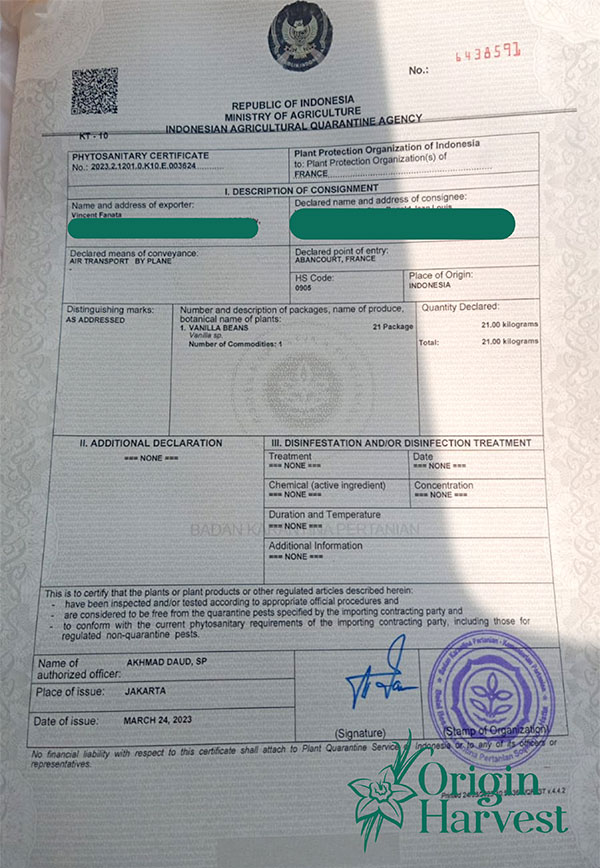
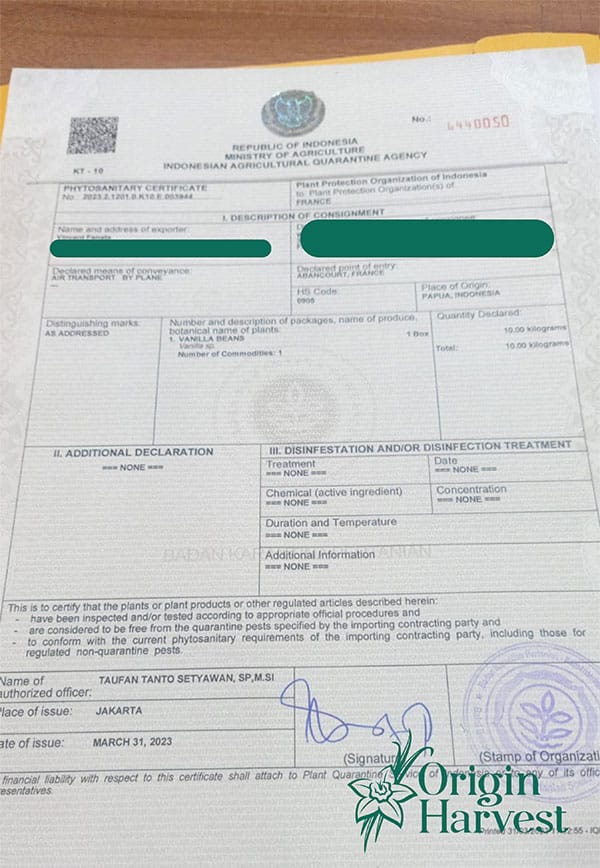


Exported Vanilla Beans
Supplied To Local Indonesian Companies
And still counting…
Indonesia ranks second as the largest producer of vanilla beans globally. Origin Harvest has supplied vanilla beans to numerous Indonesian suppliers and exports to multiple countries. As a direct source of Indonesian vanilla beans, we proudly serve as the primary supplier, offering a wide range of options, from extract grade, gourmet grade to luxury grade, including Tahitian and planifolia beans. We directly source our beans from vanilla farmers in Papua New Guinea (PNG) and Indonesia. Our competitive pricing ensures excellent value for our customers.
Origin Harvest
Indonesia Vanilla Beans
We supply Vanilla Pods, Chopped Vanilla, Vanilla Powder, and Vanilla Extract.
LUXURY GRADE
Grade: A+
Vanilla Bean Types: Planifolia and Tahitian
Vanillin Content: ≥ 2%
Length: ≥16 cm
Moisture: 25-30%
Appearance: Black Oily
Aroma: Strong and Aromatic
Harvest: Old and Ripe
Quality Assurance: No Mold, No Split
GOURMET GRADE
Grade: A
Vanilla Bean Types: Planifolia and Tahitian
Vanillin Content: 1-2%
Length: 14 – 16 cm
Moisture: 25-30%
Appearance: Black Oily
Aroma: Strong and Aromatic
Harvest: Old and Ripe
Quality Assurance: No Mold, No Split
EXTRACT GRADE
Grade: B
Vanilla Bean Types: Planifolia and Tahitian
Vanillin Content: ≤ 1.5%
Length: ≤14 cm
Moisture: +/- 10%
Appearance: Black, Not Oily
Aroma: Strong and Aromatic
Harvest: Old and Ripe
Quality Assurance: No Mold, No Split
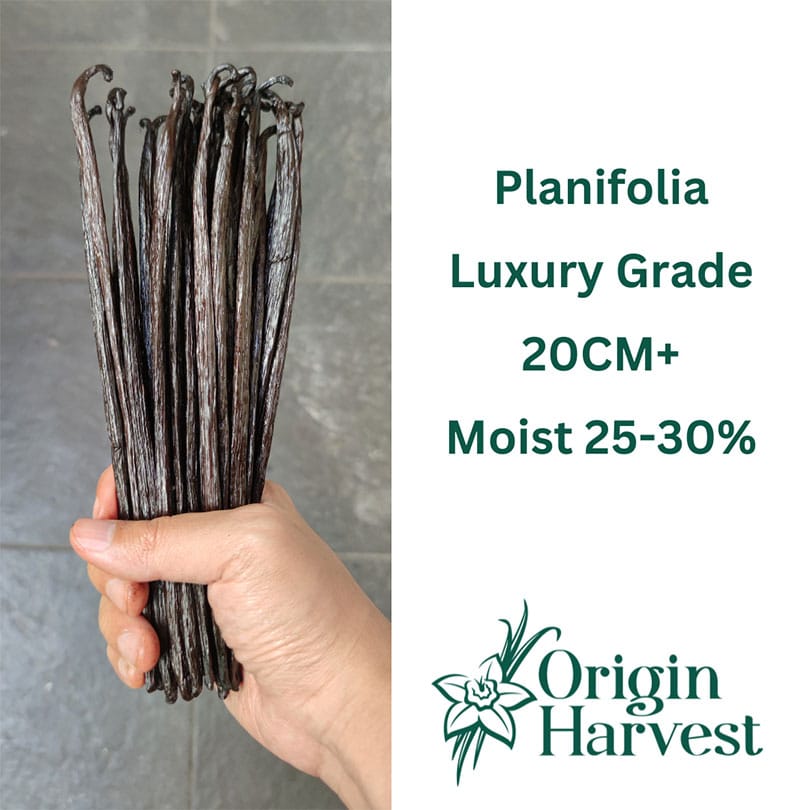

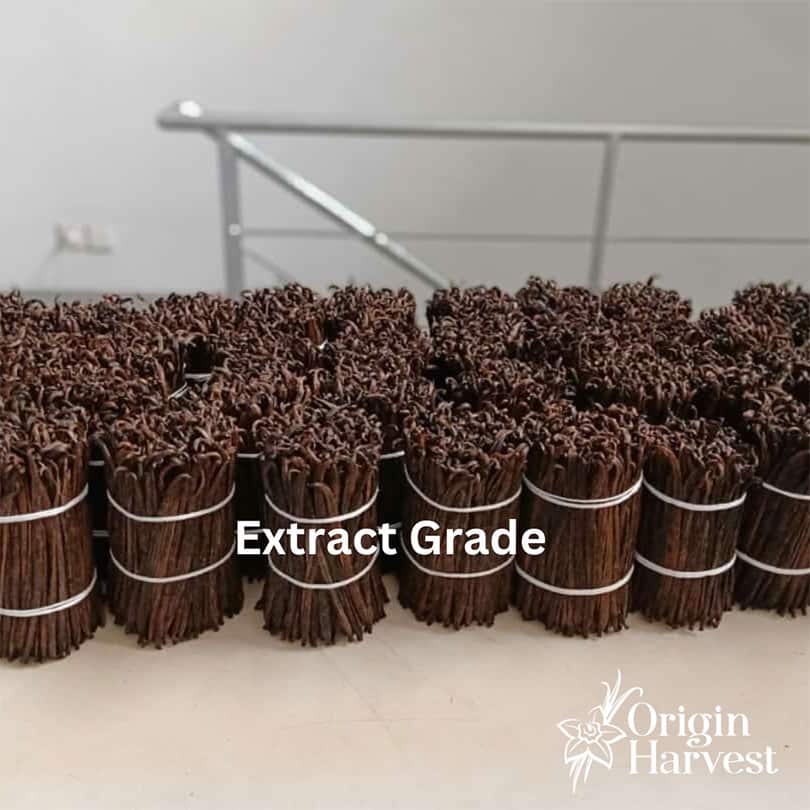
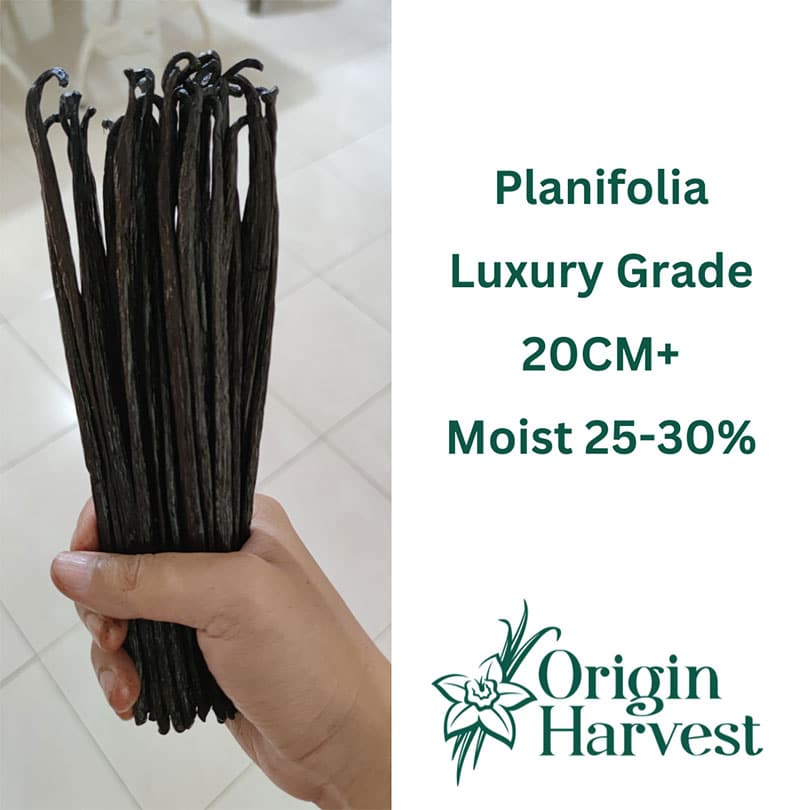
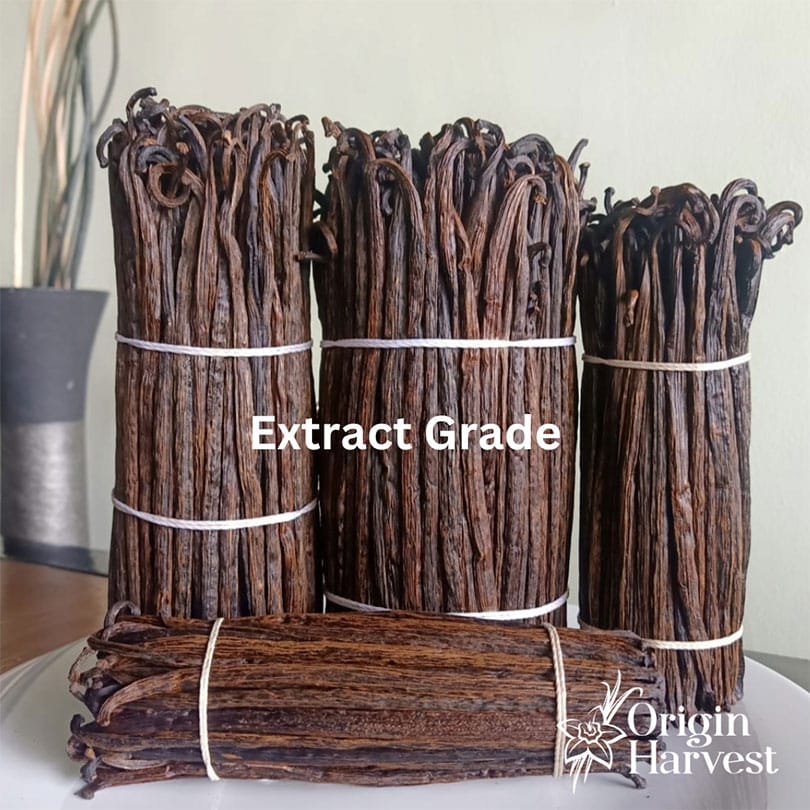


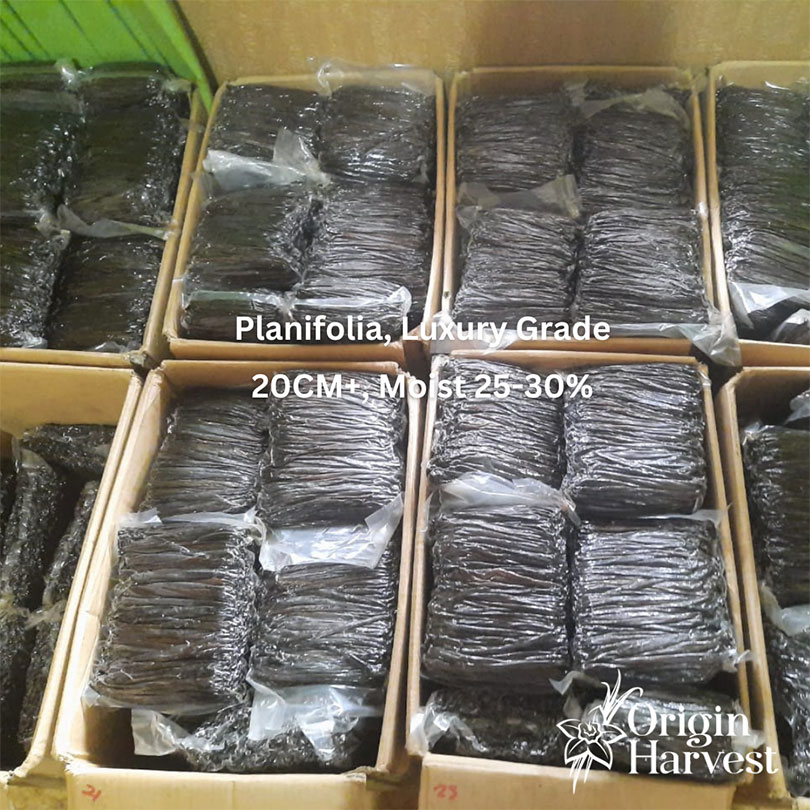
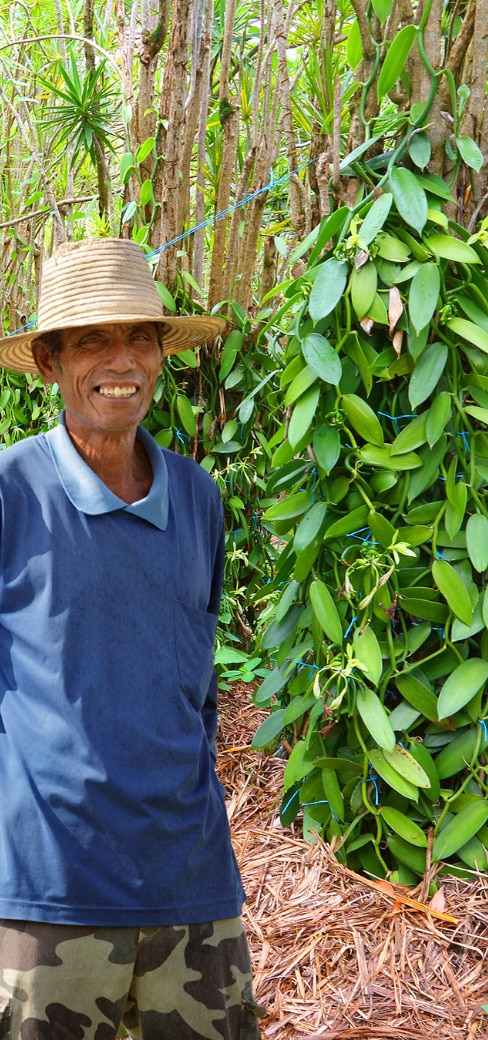
Approaches to Growing Indonesia Vanilla Beans
Vanilla is best grown in a tropical area with proper temperature and humidity. It is also cultivated well in a greenhouse, although intense labor is required for its care. It prefers soil with rich minerals, acid, and good drainage as the keys to successful cultivation. It also needs fertilizer to keep it free from worms and oil cakes and requires additional support.
First, it is tempting to grow vanilla in a polybag, but a gardener with experience and accomplishment may challenge themselves with how to grow vanilla beans. As it is categorized as an orchid family, it may be difficult to care for. Commonly, tender care and a controlled environment are needed during its growth. Finally, harvesting time may pay off your long efforts and expense.
Regarding how vanilla beans grow, they generally require patience to see their vine grow naturally. This also requires a conditioned tropical environment, and in medium growth, a mixture of orchid compost is needed. Additional support stakes are also provided to assist the vanilla in climbing. As it is difficult to care for, we as farmers offer the best vanilla beans at the lowest prices. Below are other characteristics of vanilla vines. They are extremely sensitive to heat, the amount of light, and soil moisture. To obtain the best vanilla beans, these three systems must be well maintained. In addition, in the wet season, keeping the humidity and moisture consistent is a must.
To produce flowers, the vanilla vine gets a certain amount of water for 6 to 8 weeks. Beautiful flowers will bloom on the shoots and turn downward to the ground. This phase is often awesome. Labor helps the vanilla plant pollinate the flowers to form the green beans. Here we take the lip of the blooming flower, take the main pollen, and place it on the nectar with the stigma inside. We do this gently since we need to locate a flop on the top and the right side behind the flower. The green beans will be kept on the vine for about six to nine months, producing vanillin, which later grows into the vanilla flavor. These are all steps done on how to grow vanilla beans as our best commodity.
How Do We Dry Our
Indonesia Vanilla Beans?

Preparation
Preparation of vanilla in the form of wet pods (7kg per treatment with 2 replications)

Withering
Withering of vanilla pods by immersing them in water at 63°C – 65°C for 2-5 minutes.

Fermented
Vanilla pods are fermented at 38°C – 40°C for 24 hours.

Measurement
Measurement of initial mass and moisture content

Drying
Drying Process (Sun Drying)

Finishing
Dried Vanilla beans
Luxury and Gourmet Grade (moisture content 25% – 30%)
Extract Grade (10% – 15%)
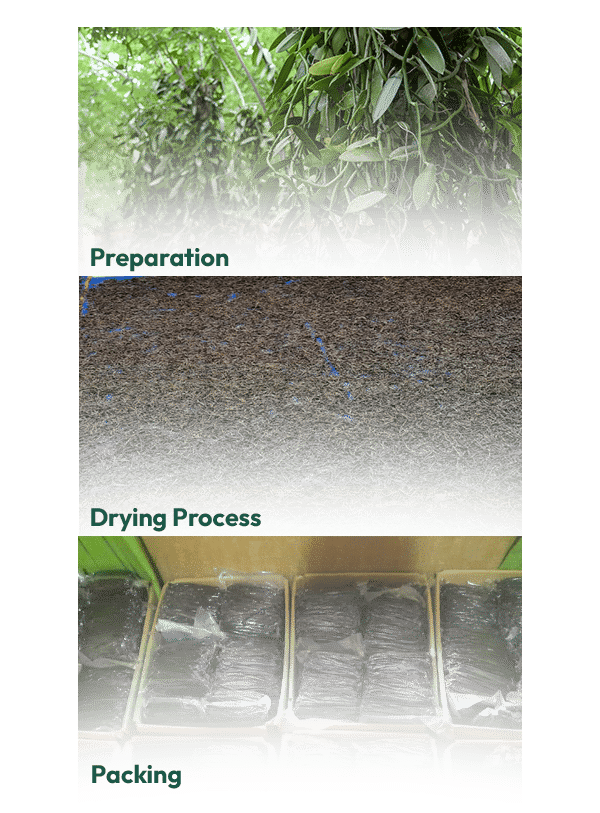
How Do We Pack Vanilla Beans?

Quality Check
Before packaging, carefully inspect the vanilla beans for any signs of mold, damage, or infestation. We only select high-quality beans for packaging. We give 100% guarantee against mold, damage and infestation.

Vacuum Sealing
Vacuum sealing is an effective method for preserving the flavor and aroma of vanilla beans.
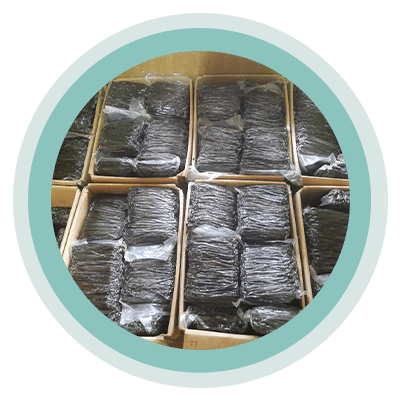
Cardboard Box
Once the vacuum-sealed bags are ready, we place the vanilla beans in a sturdy cardboard box.
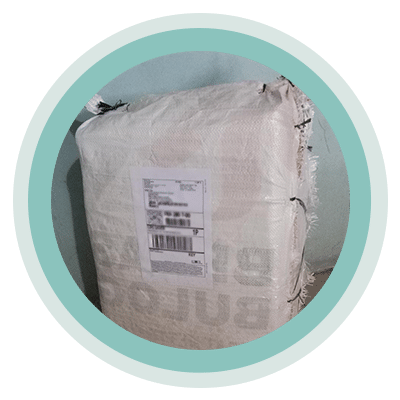
Sack or Padding
To provide extra protection, we use a sack to help absorb any impact during transportation and minimizes the risk of beans getting crushed.
7 Interesting Facts About Vanilla Beans
1. Vanilla beans are originally wild in tropical forests. They are one of the oldest plant families called Orchidaceae, and their vine can reach up to 30 meters long.
2. They grow in the jungle, and their roots commonly turn downward to the ground. They are then buried in loose soil. Only their root hairs will appear, and they take water, minerals, and energy from the substrate.
3. Vanilla is a special plant that grows like a vine, and it can be challenging to cultivate it in containers or as a houseplant.
4. Vanilla plants need limited but enough light to grow. They grow best in warm temperatures; cooler temperatures will only slow growth.
5. We need to water the support and the soil medium to help the aerial roots reach the right moisture level.
6. Vanilla beans are sensitive to diseases and insects when they are overwatered. Their growth has a risk of being disturbed by slugs and snails.
7. Vanilla beans are sensitive to be attacked by the diseases and the insects when it’s overwatered. Their growths have the risk to be disturbed by slug and snails.
